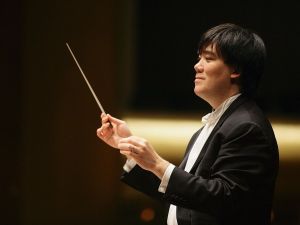Concert | Visiting orchestras
Gewandhausorchester Leipzig

Alan Gilbert © Chris Lee
“Nothing came of the prominent connections between the individual movements, of which I initially dreamt”, wrote Gustav Mahler in 1896 of his Third Symphony. The composer had, for a time, planned a sequence of movements that was based on Arthur Schopenhauer’s “hierarchy of ideas”: the progressive portrayal of the different stages of existence from inanimate material through flora and fauna to human beings and to the notion of a metaphysically idealized, comprehensive love. This is why Mahler once noted as a secret programme for his Third:
1st movement: What the Stony Mountains Tell Me
2nd movement: What the Meadow Flowers Tell Me
3rd movement: What the Forest Creatures Tell Me
4th movement: What Man Tells Me
5th movement: What the Angels Tell Me
6th movement: What Love Tells Me
Mahler never published these titles – not just because of a fear that the symphony could be misunderstood by the audience as programme music, but also because the work, together with its plans to draw connections between the movements, had grown beyond its original concept as it was created.
The performance of this monumental work is entirely in Leipzig’s hands this evening, represented by the ladies of the Gewandhaus Choir and the Leipzig Opera Chorus, the Gewandhaus Children’s Choir and the Gewandhaus Orchestra under Alan Gilbert.
Gustav Mahler [1860-1911]
Symphony No. 3 in D minor
for large orchestra, alto solo, boys’ choir and women’s choir [1895/96]
First Part
I. Strong and decisive
Second Part
II. In the tempo of a minuet
III. Comfortably, like a scherzo
IV. Very slowly, mysteriously
V. Cheerful in tempo and cheeky in expression
VI. Slowly, tranquil, deeply felt
Gerhild Romberger alto
Ladies of the Chor der Oper Leipzig
Alessandro Zuppardo vocal coach
Ladies of the GewandhausChor
Gregor Meyer vocal coach
GewandhausKinderchor
Frank-Steffen Elster vocal coach
Gewandhausorchester Leipzig
Alan Gilbert conductor
A Berliner Festspiele / Musikfest Berlin event